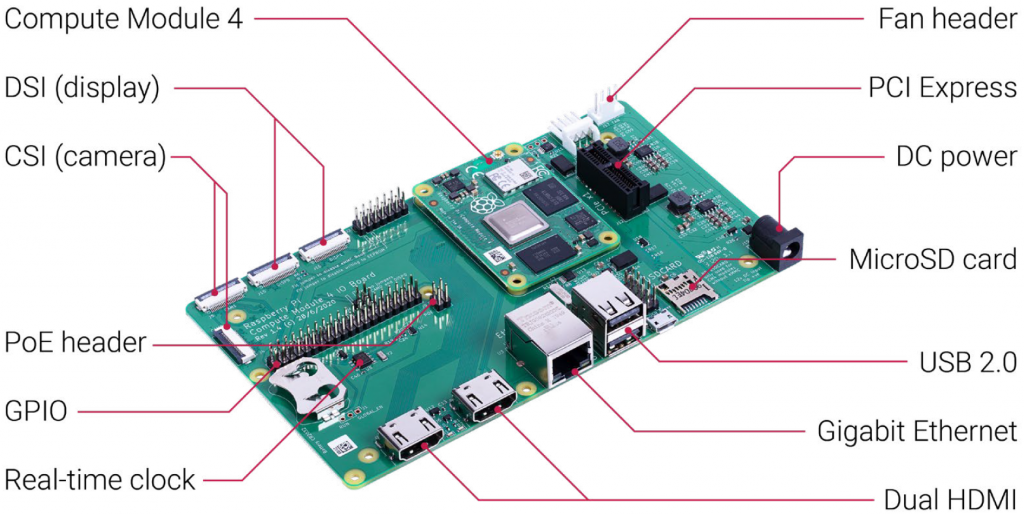
Exposing every interface from Raspberry Pi Compute Module 4, the Compute Module 4 IO Board provides a development platform and reference base-board design.

- External power connector (+12V, +5V)
- 2 x full-size HDMI 2.0 connectors
- 2 x USB 2.0 connectors, with header for two additional connectors
- Gigabit Ethernet RJ45 with PoE support
- Micro USB socket for updating Compute Module 4
- MicroSD card socket for Compute Module 4 Lite (without eMMC) variants
- PCIe Gen 2 x1 socket
- Standard fan connector
- 2 x MIPI DSI display FPC connectors (22-pin 0.5 mm pitch cable)
- 2 x MIPI CSI-2 camera FPC connectors (22-pin 0.5 mm pitch cable)
- Standard Raspberry Pi HAT connectors
- Real-time clock with battery socket and ability to wake Compute Module 4
- Various jumpers to disable specific features, e.g. wireless connectivity, EEPROM writing
More information:
https://www.raspberrypi.org/products/compute-module-4-io-board/






